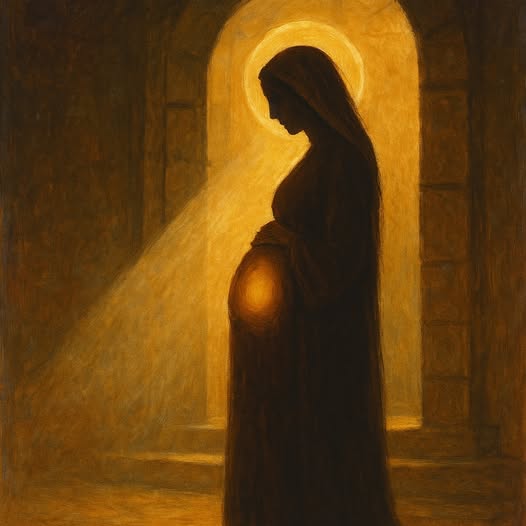
Throughout Scripture, the Day of the Lord is portrayed as a time when God steps into human history in a dramatic and often terrifying way to judge sin, vindicate His people, and ultimately establish His reign. While many Christians associate this phrase exclusively with the visible, triumphant return of Jesus Christ, the biblical language suggests something more layered. In particular, the imagery of the Day coming “like a thief in the night” points to a sudden, unexpected onset of divine wrath that begins before the climactic appearance of Christ Himself.
Thief in the Night: The Start of Wrath
One of the clearest passages describing this sudden eruption is found in Paul’s first letter to the Thessalonians. In 1 Thessalonians 5:2–3, he writes, “For you yourselves are fully aware that the day of the Lord will come like a thief in the night. While people are saying, ‘There is peace and security,’ then sudden destruction will come upon them as labor pains come upon a pregnant woman, and they will not escape.” Here, the first sign of the Day is not deliverance but unexpected catastrophe. People will be convinced that nothing is wrong, confident in their own safety, when destruction abruptly arrives. Paul’s comparison to labor pains reinforces that once this process begins, it will continue inexorably until it reaches its conclusion.
This emphasis on the suddenness of judgment, rather than the immediate rescue of believers, suggests that the Day of the Lord begins with an outbreak of wrath against an unprepared world. It is this element of surprise and terror that captures the sense of God’s intervention “like a thief,” coming without warning to those who are spiritually asleep.
A Sequence of Events, Not a Single Moment
The idea that the Day of the Lord unfolds in stages becomes even clearer in Paul’s second letter to the Thessalonians. In 2 Thessalonians 2, he cautions the church not to be unsettled by claims that the Day of the Lord has already arrived. Instead, he explains that certain events must occur first: a great rebellion and the revealing of the “man of lawlessness,” who will exalt himself above every so-called god or object of worship. This sequence underscores that the Day of the Lord does not consist of a single event but rather a series of developments that culminate in Christ’s return.
This framework helps explain why the Day can be both sudden and extended. It arrives without warning in the sense that judgment begins when no one expects it, yet it includes a progression of events that build toward the visible appearing of Jesus.
The Final Climax: The Visible Return of Christ
While the thief-like language highlights the unexpected onset of God’s wrath, other passages show that the Day of the Lord ultimately reaches its climax in Christ’s Second Coming. For example, in 2 Peter 3:10, Peter writes, “But the day of the Lord will come like a thief, and then the heavens will pass away with a roar…” This description fast-forwards to the dissolution of the created order itself. In Revelation 19, the return of Christ is portrayed as the moment when He defeats His enemies openly and establishes His rule on earth.
These texts together show that the Second Coming is the culminating event of the Day of the Lord, but not necessarily its starting point. The process begins earlier with judgments that fall on a world unprepared for the reality of divine holiness and justice.
A Day of the Lord Period
Taken together, these passages present the Day of the Lord as a period of time, not a single point. It begins suddenly, like a thief breaking in, when God’s wrath erupts against sin and rebellion. It unfolds through escalating judgments and culminates in the visible, glorious appearing of Christ to defeat His enemies and establish His kingdom. This understanding preserves both the element of surprise and the ultimate triumph of God’s purposes.
Conclusion
Recognizing that the Day of the Lord starts before the Second Coming clarifies many of the prophetic warnings and helps believers understand why the New Testament repeatedly urges watchfulness. Those who belong to Christ are not in darkness and should not be caught unaware when the judgments begin. As Paul says in 1 Thessalonians 5:4, “But you are not in darkness, brothers, for that day to surprise you like a thief.”
This perspective underscores the seriousness of spiritual complacency and the importance of living in readiness for the unfolding of God’s plan—a plan that begins with judgment and ends with the final victory of Christ.
Discussion Questions
- How does understanding the Day of the Lord as a period of time, rather than a single moment, change the way we read passages like 1 Thessalonians 5 and 2 Peter 3?
- Why do you think the Bible uses the imagery of a thief in the night to describe God’s judgment, and what does that say about the importance of spiritual readiness?
- In what ways does the idea that the Day of the Lord begins with sudden judgment rather than immediate deliverance challenge common assumptions about end-times events?
- How can believers prepare themselves so that they are not caught off guard by the unfolding of God’s plan in history?
- What encouragement can we draw from knowing that even though the Day of the Lord starts with wrath, it ends with the ultimate victory and reign of Christ?
Want to Know More?
George Eldon Ladd, The Blessed Hope: A Biblical Study of the Second Advent and the Rapture
- This classic work examines historic premillennial perspectives and argues that the Day of the Lord includes the judgments leading up to the Second Coming rather than requiring a separate pre-tribulation rapture.
Richard Mayhue, The Day of the Lord: The Key to Understanding End-Time Prophecy
- A detailed analysis of every major Old and New Testament passage about the Day of the Lord. Mayhue shows how the concept spans a series of judgments and climaxes in Christ’s return.
Douglas J. Moo, 1 and 2 Thessalonians (The NIV Application Commentary)
- A reliable commentary that explains Paul’s teaching about the Day of the Lord and the “thief in the night,” highlighting how these ideas fit together without requiring a secret rapture.
D.A. Carson and Douglas J. Moo, An Introduction to the New Testament
- A standard seminary textbook that provides balanced discussion of 1–2 Thessalonians and 2 Peter, including the historical background of the Day of the Lord language.
Craig S. Keener, The IVP Bible Background Commentary: New Testament
- This volume is excellent for understanding how first-century believers would have heard “thief in the night” and “labor pains,” situating these metaphors in Jewish apocalyptic thought.





